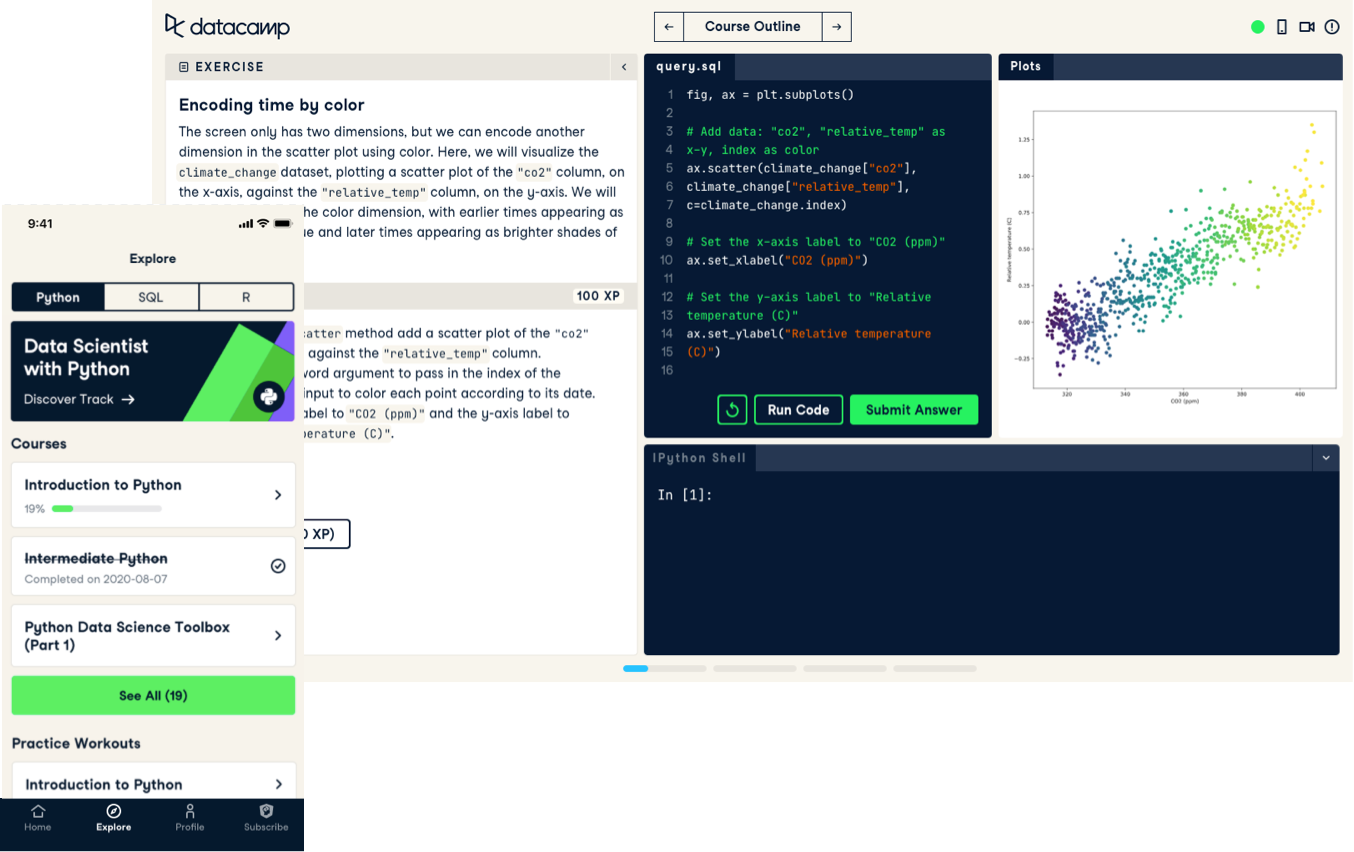Introduction to TensorFlow in Python
Learn the fundamentals of neural networks and how to build deep learning models using TensorFlow.
Follow short videos led by expert instructors and then practice what you’ve learned with interactive exercises in your browser.

Learn the fundamentals of neural networks and how to build deep learning models using TensorFlow.
Learn how to build your own SQL reports and dashboards, plus hone your data exploration, cleaning, and validation skills.
Understand the concept of reducing dimensionality in your data, and master the techniques to do so in Python.
Learn to create your own Python packages to make your code easier to use and share with others.
Master sampling to get more accurate statistics with less data.
Reshape DataFrames from a wide to long format, stack and unstack rows and columns, and wrangle multi-index DataFrames.
Learn to start developing deep learning models with Keras.
Learn how to prepare credit application data, apply machine learning and business rules to reduce risk and ensure profitability.
Learn the fundamentals of exploring, manipulating, and measuring biomedical image data.
Learn the practical uses of A/B testing in Python to run and analyze experiments. Master p-values, sanity checks, and analysis to guide business decisions.
In this conceptual course (no coding required), you will learn about the four major NoSQL databases and popular engines.
Learn to implement custom trading strategies in Python, backtest them, and evaluate their performance!
Master the core operations of spaCy and train models for natural language processing. Extract information from unstructured data and match patterns.
Learn to perform linear and logistic regression with multiple explanatory variables.
Step right into the dynamic world of data modeling with Snowflake!
Learn techniques for automated hyperparameter tuning in Python, including Grid, Random, and Informed Search.
Learn how to draw conclusions about a population from a sample of data via a process known as statistical inference.
This course is an introduction to linear algebra, one of the most important mathematical topics underpinning data science.
Learn to model and predict stock data values using linear models, decision trees, random forests, and neural networks.
Evaluate portfolio risk and returns, construct market-cap weighted equity portfolios and learn how to forecast and hedge market risk via scenario generation.
Discover different types in data modeling, including for prediction, and learn how to conduct linear regression and model assessment measures in the Tidyverse.
In this course you will learn how to predict future events using linear regression, generalized additive models, random forests, and xgboost.
Learn cutting-edge methods for integrating external data with LLMs using Retrieval Augmented Generation (RAG) with LangChain.
Learn the basics of model validation, validation techniques, and begin creating validated and high performing models.
Learn the fundamentals of how to build conversational bots using rule-based systems as well as machine learning.
Learn all about the advantages of Bayesian data analysis, and apply it to a variety of real-world use cases!
Take your reporting skills to the next level with Tableau’s built-in statistical functions.
Are customers thrilled with your products or is your service lacking? Learn how to perform an end-to-end sentiment analysis task.
This course will show you how to integrate spatial data into your Python Data Science workflow.
This course provides an intro to clustering and dimensionality reduction in R from a machine learning perspective.